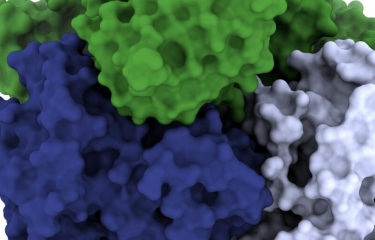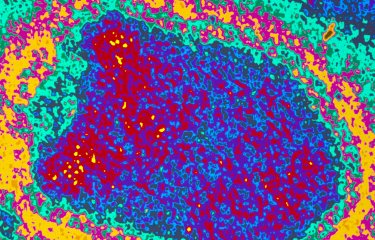On rare occasions in mainland France, a bite or scratch by a bat can transmit a virus capable of causing rabies, as was the case for a patient in 2019. Experts from the National Reference Center for Rabies at the Institut Pasteur contributed to a study on that particular case this year, in cooperation with research teams from the Institut Pasteur and Necker Enfants Malades and Pitié-Salpêtrière hospitals. This presents an ideal opportunity for a reminder about the precautions to take to prevent rabies.
In August 2019, a case of rabies believed to have been transmitted by a bat led to the death of a patient in the Nouvelle-Aquitaine region of France. This highly unusual case was confirmed by the National Reference Center (CNR) for Rabies at the Institut Pasteur (in french) in 2020, then in a study published in May 2021 in the journal Clinical Infectious Diseases. It was the first time that a patient had been contaminated by European bat lyssavirus type 1 (EBLV-1) in mainland France, and the first case of rabies contracted in mainland France since 1924! Cases of transmission from bats to humans remain exceptional – this was just the fourth confirmed occurrence in Europe.
Rare cases of transmission have also been reported in other mammals such as in domestic cats, notably by the National Reference Center for Rabies in France.
However, despite these very rare incidences, we should not overlook the fact that the main risk of rabies for humans worldwide comes from the disease circulating in carnivores, particularly dogs (canine rabies). Like most other European countries, mainland France is still exposed to the disease, whether through the illegal introduction of contaminated animals in areas where the disease is prevalent (mainly in Asia and Africa), or through travelers who have also become infected in these areas.
Since the viruses that cause rabies are only transmitted by the saliva of an infected animal following a bite or scratch, it is strongly recommended not to handle animals, whether they are wild animals such as bats (especially with bare hands) or domestic animals in countries where rabies is circulating. Specifically for bats, and in the event of an emergency which requires the animal to be handled, it is best to contact a specialist or, if absolutely necessary, to wear thick gardening or leather gloves. In this case, another option is to use a tool or instrument to place the animal in a container away from predators, so that you can keep your hands at a safe distance. These precautions greatly reduce the risk of infection. If, despite your best efforts, you are bitten, you should clean the wound carefully with soap, rinse thoroughly and disinfect it with an antiseptic solution. You should then contact the nearest rabies center, for example the Anti-Rabies Center in the Institut Pasteur Medical Center (in french).
Rabies is a central nervous system infection, a type of encephalitis, which disrupts neuronal activity. The incubation period is long enough for treatment to be administered by vaccination before the onset of the first symptoms. But if nothing is done before the onset of symptoms, rabies is systematically fatal. For further information about rabies, see the Institut Pasteur's "Rabies" fact sheet de l’Institut Pasteur.
First Case of Lethal Encephalitis in Western Europe Due to European Bat Lyssavirus Type 1, Clinical Infectious Disease, May 15, 2021
Béatrice Regnault1,2 ; Bruno Evrard3,4 ; Isabelle Plu5,6 ; Laurent Dacheux7 ; Eric Troadec1,2 ; Pascal Cozette7 ; Delphine Chrétien1,2 ; Mathilde Duchesne8 ; Jean-Michel Vallat9 ; Anne Jamet10 ; Marianne Leruez10 ; Philippe Pérot1,2 ; Hervé Bourhy7 ; Marc Eloit1,2,11 ; Danielle Seilhean5,7.
1. Pathogen Discovery Laboratory, Institut Pasteur, Paris, France;
2. The OIE Collaborating Center for the Detection and Identification in Humans of Emerging Animal Pathogens, Institut Pasteur, Paris, France;
3. Medical-Surgical Intensive Care Unit, Dupuytren University Hospital, Limoges, France;
4. Inserm CIC 1435 and UMR 1092, Dupuytren Teaching Hospital, Limoges, France;
5. Sorbonne Université, Brain Institute (ICM; INSERM, UMRS 1127; CNRS, UMR 7225), Paris, France;
6. Département de Neuropathologie Raymond Escourolle, Groupe Hospitalier Pitié-Salpêtrière, Paris, France;
7. Lyssavirus Epidemiology and Neuropathology Unit, National Reference Centre for Rabies, World Health Organization (WHO) Collaborative Centre for Reference and Research on Rabies, Institut Pasteur, Paris, France;
8. Pathology Department, Dupuytren University Hospital, Limoges, France;
9. Neurology Department, Dupuytren University Hospital, Limoges, France;
10. Department of Clinical Microbiology, Necker Enfants-Malades Hospital, AP-HP, Centre Université de Paris, Paris, France;
11. Ecole Nationale Vétérinaire d’Alfort, Maisons-Alfort, France.






